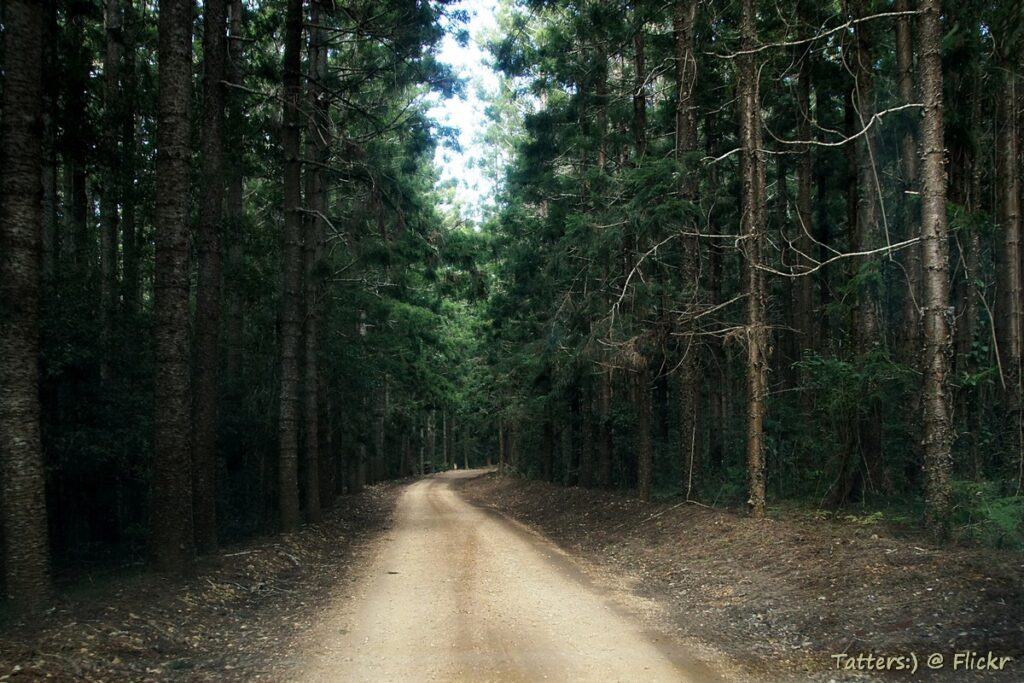Protected Magazine
Transitioning Native State Forests Into Protected Areas
In 1999, the South East Queensland Forest Agreement was signed by the Beattie Government, various conservation groups and the then Queensland Timber Board.
Under this historic agreement, it was agreed that remaining areas of native state forests between Gladstone in the north to the New South Wales border in the south would only be logged as a last resort and their protection would be secured at the end of 2024 “by the latest”.
In 2019, then Premier Annastacia Palaszczuk extended this deadline until 2026 for State Forests north of Noosa.
Transitioning native state forests into various protected area tenures requires a nuanced approach, respecting their conservation values, the legacy of forestry and a range of existing community uses. It also requires leadership, to ensure that the transitions occur in an orderly and timely manner. A key issue threatening the timely transition of native state forests in Queensland is the lobbying and campaigning by the Timber Industry.
Professor David Lindenmayer is a world-leading expert in forest ecology and resource management, conservation science and biodiversity conservation and has been leading the charge in response to lobbying by the Timber Industry.
Central to Lindenmayer’s vision is a new approach to native forestry management—one rooted in reverence for the natural world and guided by scientific rigour. By exposing the truth behind industry spin and misinformation, Lindenmayer lays the foundation for a more sustainable future—one where native forests thrive undisturbed and communities coexist in harmony with nature.
The following opinion piece, published in Crikey on 5 April 2024, was authored by David Lindenmayer and Chris Taylor, both from the Fenner School of Environment and Society at ANU. The article debunks one of the main myths espoused by the Timber Industry, being the merits of forest thinning.
No, thinning forests isn’t the answer — it worsens our wildfires
It might seem like forest thinning is a good way to reduce the risk of bushfires. Empirical evidence shows otherwise.
In the world game — football (or soccer) — an own goal is when a player accidentally scores against their team. But own goals are not confined to the football pitch.
Evidence-free policy and management threaten to kick a slew of own goals, via demands to intensively thin native forests. Thinning is where more than half of a forest’s trees are removed in some cases, leaving fewer, more widely spaced stems in what then often becomes a radically altered forest.
Thinning is done by heavy machinery, with the timber typically used for firewood, woodchips or making paper. Because thinning demands such machinery, an extensive, expensive road network is needed. This means it costs money to thin forests, and the government bodies responsible for forest management make losses.
Recent popular books and commentaries have called for the widespread thinning of national parks and state forests. Forestry industry lobby groups also routinely call for forest thinning, especially after wildfires such as the Black Summer of 2019-20.
The logic of such calls is that thinning reduces the risk of wildfires. Yet empirical evidence shows it either has no effect on the severity of wildfires or worsens them in some cases. One study found that thinning operations significantly increased the fuel hazard by adding 24 tonnes per hectare of fuel to the forest floor. This can increase the severity of wildfires, not only endangering the integrity of the forest itself but also putting nearby communities at increased fire risk.
Thinned forests also allow more sunlight through sparser forest canopy, drying out fuel and permitting more wind to blow across it, thereby driving the more rapid spread of a potential fire. Even the government’s forestry guidelines warn of the increased fire dangers posed by thinning.
Further, removing large numbers of trees from forests generates significant amounts of greenhouse gas emissions (up to hundreds of tonnes per hectare), not only during logging operations but also because the trees are used for firewood, woodchips (for export) or for making paper or box liners. These forest products have a short time in the carbon life cycle before they go to landfill and generate yet further emissions.
It is critical to understand that trees are mostly carbon, so thinning forests and turning timber into short-life products liberates much of that carbon to the atmosphere. Importantly, there is a long delay of hundreds if not thousands of years between when carbon emissions from logging first occur and when that carbon is fixed by trees. The more carbon that stays in the atmosphere for longer, the more potent global heating is and the higher the temperatures that result.
Beyond this, thinning forests also impacts biodiversity. A vast number of animal and plant species are strongly dependent on the understorey and other plants that can be lost or badly damaged during industrial thinning operations. It is a critical part of the habitat that is home to critically endangered species such as Victoria’s faunal emblem, the Leadbeater’s possum. These animals cannot exist when their habitat is removed. In fact, the more layers of forest that exist, the more species of birds and other animals that can coexist.
The best climate solution for forests is to leave them intact and not log or thin them at all. Forests need to recover from decades of overlogging and gross mismanagement by industry and logging agencies. They need less disturbance, not more. Indeed, other key work indicates that if we were to stop logging native forests in Australia, we would reach our 43% GHG reduction targets by 2030 (and have some margin left over to offset some of our other emissions like those from the transport sector).
The overwhelming conclusion of the body of scientific work done on fire risk, carbon emissions and biodiversity conservation is that thinning forests is a bad idea. Making sure we do not have widespread thinning in forests is a critical way to reduce the risks of yet more evidence-free forest policy management own goals.
An interview with David Lindenmayer discussing more of the myths espoused by the Timber Industry is available here (https://www.youtube.com/watch?v=CfWxbJXeZbE&ab_channel=ANUTV)



